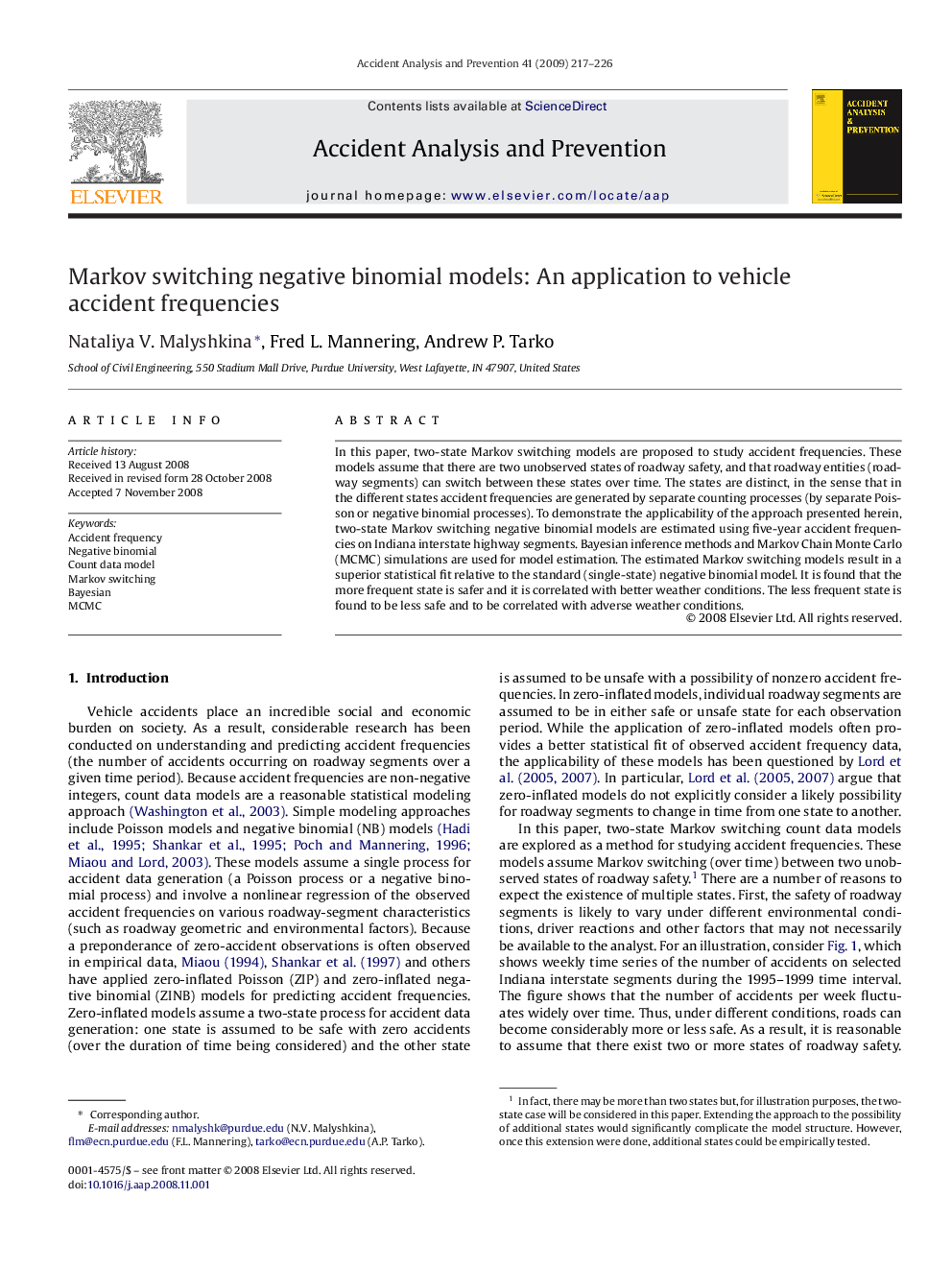| کد مقاله | کد نشریه | سال انتشار | مقاله انگلیسی | نسخه تمام متن |
|---|---|---|---|---|
| 573390 | 877397 | 2009 | 10 صفحه PDF | دانلود رایگان |

In this paper, two-state Markov switching models are proposed to study accident frequencies. These models assume that there are two unobserved states of roadway safety, and that roadway entities (roadway segments) can switch between these states over time. The states are distinct, in the sense that in the different states accident frequencies are generated by separate counting processes (by separate Poisson or negative binomial processes). To demonstrate the applicability of the approach presented herein, two-state Markov switching negative binomial models are estimated using five-year accident frequencies on Indiana interstate highway segments. Bayesian inference methods and Markov Chain Monte Carlo (MCMC) simulations are used for model estimation. The estimated Markov switching models result in a superior statistical fit relative to the standard (single-state) negative binomial model. It is found that the more frequent state is safer and it is correlated with better weather conditions. The less frequent state is found to be less safe and to be correlated with adverse weather conditions.
Journal: Accident Analysis & Prevention - Volume 41, Issue 2, March 2009, Pages 217–226